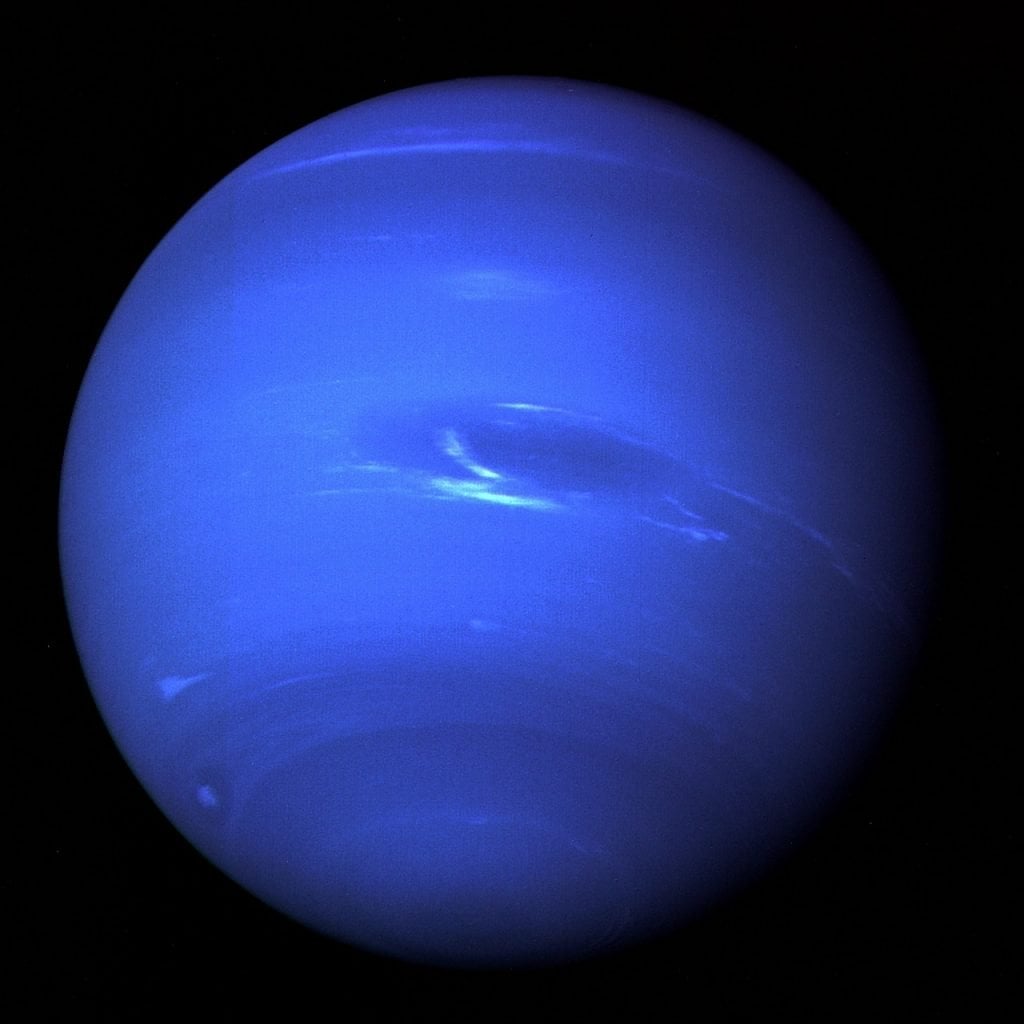While observing the outer edge of the solar system, scientists using NASA’s Hubble Space Telescope discovered something that puzzled them. The telescope picked up a large dark vortex on Neptune.
NASA and the Space Telescope Science Institute (STScI) announced the discovery of the storm on Thursday. The institute is tasked with selecting observation targets for the telescope from among the suggestions submitted by scientists around the globe.
According to NASA, the storm is monstrous. Based on their observations, scientists measured the storm at about 6,800 miles across. To put that measurement into perspective, the storm would stretch from New York City to the tip of South America if it were here on Earth. Additionally, scientists say the vortex is so strong that it would cover both American continents and be catastrophic for life on Earth. Such observations suggest that if such a storm ever occurs on Earth, it would swallow 20% of its surface. However, due to our planet’s atmosphere, a storm like the large dark vortex on Neptune is unlikely to happen here.
The STScI said in a press release said in a press release that scientists observed the storm on Neptune’s northern hemisphere close to a patch of bright-white “companion” clouds which are easily noticeable when studying the deep-blue planet. These clouds form when air is redirected over the vortex, which causes the gases in the air to freeze as methane ice.
“These clouds are similar to clouds that appear as pancake-shaped features when air is pushed over mountains on Earth (though Neptune has no solid surface),” the STScI said.
This is the fourth storm of this kind and intensity discovered on Neptune, and scientists say there are many reasons such storms are different from those which occur on our planet. When a strong, damaging storm occurs on Earth, it lasts only several days or sometimes a few weeks. However, scientists expect the large dark vortex on Neptune to last about two years like other similar storms on the planet have. Storms on Neptune are similar to the storms scientists have studied on Jupiter. Currently the gas giant’s strongest storm, which also holds the record for the longest storm of this type, is the Great Red Spot, which scientists believe has raged for at least 400 years. Scientists found in February 2018 that the storm may slowly be winding down and shrinking.
The first two storms ever discovered on Neptune were spotted with NASA’s Voyager 2 spacecraft when it zipped by the planet in 1989. However, since Hubble was launched, it has detected four more intense storms, one of which is the recently-discovered large dark vortex on Neptune.
Hubble detected one of the other storms in 2015, and scientists studied it through 2017. They learned that the clouds which formed this storm were made of deadly hydrogen sulfide gas.
Scientists expected this storm to head toward Neptune’s equator and then break into smaller sections. However, scientists remain confused after seeing the storm moved southward and then begin fading away.
“We have no evidence of how these vortices are formed or how fast they rotate,” researcher Agustín Sánchez-Lavega of the University of the Basque Country in Spain said in a February 2018 release.
Given that scientists are studying these storms on other worlds and comparing them to those taking place on Earth, we may one day gain a better understanding of the differences and similarities between atmospheres on various planets.












